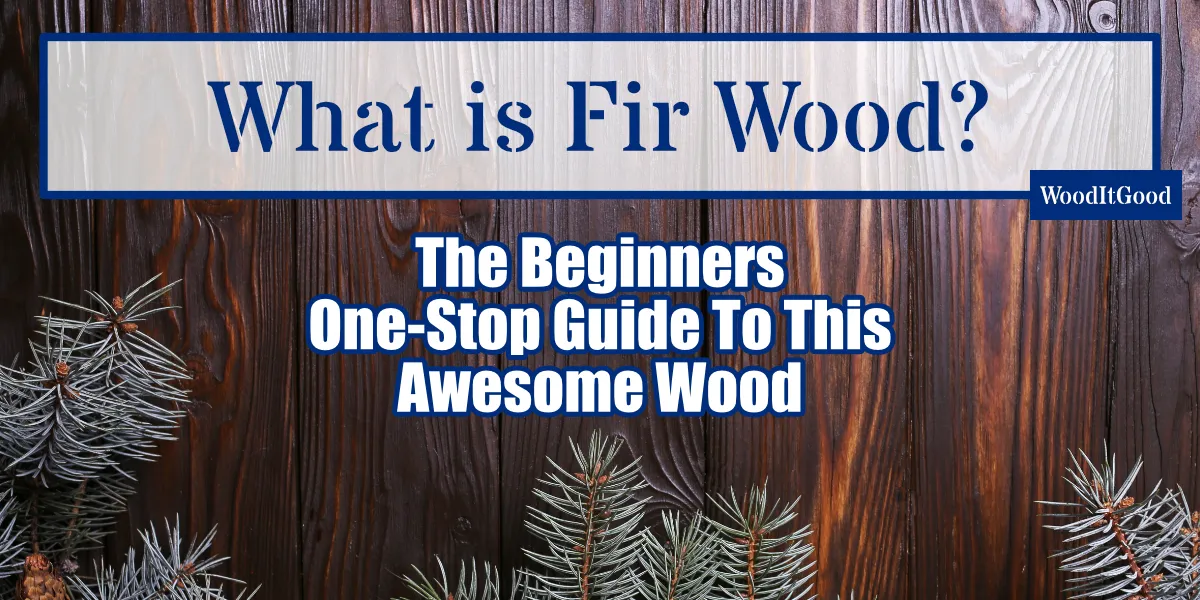WoodItGood is supported by its readers. We may earn an affiliate commission at no extra cost to you if you buy through a link on this page.
What IS fir wood, exactly? Today we’re gonna tackle learnin’ all about fir wood just like we’re a defensive lineman.
Now, fir might not be as flashy as some of those fancy hardwoods out there, but don’t you go underestimating this little number!
Fir’s a real workhorse in the woodshop, and for good reason too.
See, fir is a softwood (you can learn more about them here), just like pines and spruces. That means it comes from cone-bearing trees, and let me tell you, it’s popular for a reason.
Fir’s strong, easy to find, and won’t put a hurtin’ on your wallet – perfect for beginners who are still figurin’ out which end of the hammer goes where.
Fir Wood: Pros and Cons
Here’s a real quick look at the pros and cons of fir wood!
You can get a broad brushstrokes overview of just how nifty this wood is from this list, and get a taste of what I’m gunna be teachin’ you throughout the rest of this post!
| Pros | Cons |
|---|---|
| Affordable | More prone to scratches and dents (softwood) |
| Easy to work with (cuts, sands, drills well) | Can be splintery |
| Glues well | Not ideal for outdoor projects (low moisture resistance) |
| Strong | Available in long boards |
| Takes stain well | Many species – color and grain can vary |
| Fast-growing and sustainable (with responsible harvesting) |
Where Does Fir Come From and How Long Has It Been Around?

Fir trees grow all over the world, but here in the US, they like to cozy up in the Pacific Northwest and the South.
Did you know that even though it’s called “fir,” the most common type we use for woodworkin’ is actually called Douglas fir?
Sounds fancy, don’t it?
Well, Native Americans have been using fir for centuries, buildin’ everything from canoes to their homes. Today, it’s a favorite for furniture, houses, and even some instruments that make pretty music!
What Does This Fir Wood Look and Feel Like?

Fir usually has a light, yellowish-brown color, with a straight grain that runs nice and even.
It ain’t quite as smooth as some of those hardwoods, but it’s comfy to work with and takes stain like a champ.
Now, there are different types of fir out there, and their exact color and grain can be a tad different, like snowflakes.
But no matter which one you pick, it’s sure to add a touch of rustic charm to your projects.
Workin’ with Fir: Easy as Pie!

This is where fir really shines for beginners like us. Fir is generally soft as butter, which makes it a dream to cut, sand, and drill.
You won’t need no fancy contraptions here, just your basic woodshop tools will do just fine.
Plus, it glues together like nobody’s business, which is a lifesaver when you’re puttin’ things together and maybe realizin’ a board ain’t quite as straight as you thought.
The only gotcha?
Fir can be a bit splintery, so keep your tools sharp and wear some gloves to protect those pretty hands.
What Kind of Magic Can You Make with Fir Wood?

The possibilities are wider than the Mississippi, honey! Fir is a fantastic choice for furniture like shelves, benches, and even simple tables.
You can also use it to build picture frames, decorative boxes, or those adorable little rustic signs that everyone seems to love.
Here’s an idea to get your creative juices flowin’: try makin’ a set of coasters out of fir. They’re small, easy to handle, and perfect for practicin’ your cuttin’ and finishin’ skills.
I’ve written up a whole post about the different types of wood too, so if fir ain’t it you can find one that’ll work for you.
Fir Wood: Tough Enough for the Long Haul?
Fir’s a pretty tough cookie, but it ain’t invincible.
It don’t hold up to rot or moisture as well as some other woods, so you wouldn’t want it for buildin’ an outdoor deck.
However, for inside projects, it’ll last for years with a little love. Just give your fir creations a good coat of sealant or varnish to keep them lookin’ their best and protected from any sneaky moisture.
Findin’ Fir and How Much Does It Cost?

Fir is one of the most common softwoods around, so you shouldn’t have any trouble findin’ it at your local lumberyard.
The price can vary dependin’ on the exact type and thickness of the wood, but generally, it’s a budget-friendly option.
Perfect for new woodworkers who are still learnin’ the ropes without breakin’ the bank!
Is Fir Wood Eco-Friendly?
These days, considerin’ the environment is important. Fir trees are a fast-growin’ bunch, which is good news for sustainability. But just like with any wood, make sure you’re buyin’ from a seller who harvests trees responsibly.
There you have it, the whole kit and caboodle on fir wood! It’s strong, affordable, and easy on beginners, makin’ it a perfect choice for all sorts of projects. Why not give fir a try on your next build?

